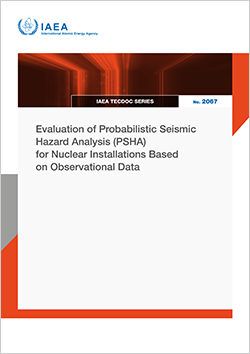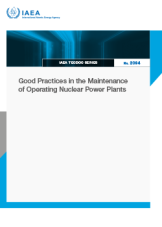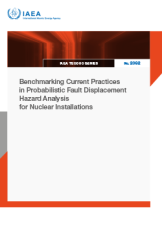Evaluation of Probabilistic Seismic Hazard Analysis (PSHA) for Nuclear Installations Based on Observational Data
IAEA-TECDOC-2067
ISBN
978-92-0-130624-1
86 pages | 26 figures | € 30.00 | Date published: 2024
The objective of this TECDOC is to support the guidance given in SSG-9 (Rev. 1), by providing the state-of-the-practice and detailed technical elements related to the evaluation of probabilistic seismic hazard assessment (PSHA) on the basis of observational data. This publication defines the methodology and provides practical guidance for evaluating the elementary and integral steps of PSHA, with the help of examples from case studies and describes the type of observational data that may be used in the evaluation. This publication also discusses the ways of using the evaluation results to check the center, body and range of the epistemic uncertainties to encourage PSHA developers to update or reconsider unrealistic assumptions or combination of unrealistic branches in the logic tree. The technical information and practical guidance provided here will be valuable to nuclear power plant operators, regulatory bodies, vendors, technical support organizations and researchers working in the field of seismic hazard assessment for nuclear installations.
Keywords:
Evaluation, Probabilistic Seismic Hazard Analysis, PSHA, Nuclear Installations, Observational Data, Earthquake Hazard Analysis, Nuclear Facilities, Earthquake Effects, Hazard Mitigation, Evaluation Results, PSHA Developers, Nuclear Power Plant Operators, Regulatory Bodies, Vendors, Technical Support Organizations, Seismic Hazard Assessment, Observational Dataset, Elementary and Integral Evaluations, Mathematical Background, Logical Framework, PSHA Studies, Case Studies, Fault Geometry, Maximum Magnitude Assessments, Earthquake Recurrence Rate Assessments, Ground Motion Models, Conceptual Framework, Key Principles, Spatially Smoothed Earthquake Recurrence Rate Assessment, Logic Trees, Bayesian Approach, Posterior Evaluations, Exceedance Calculations, Key Aspects, Timescales, Geographical Scales, Hazard Analysis Input Data, Feedback, Review



